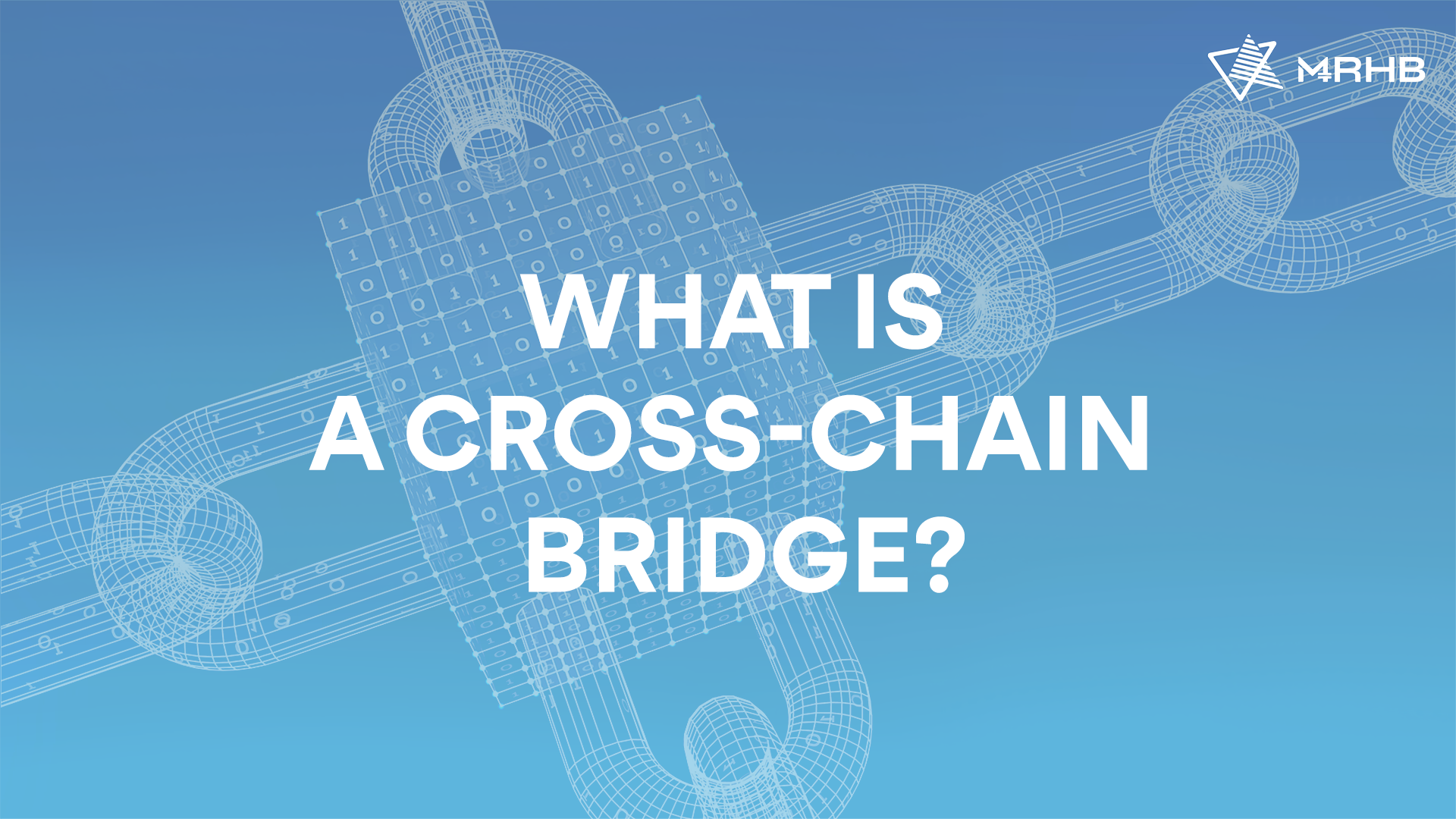Investors on Web3 are tech-savvy players who greatly value autonomy mixed with flexibility. This is where the isolated nature of individual blockchains can sometimes hinder their trading experience. As most common blockchains only support tokens within their own network, exchanges across the entire Web3 space can become a challenge.
To solve this issue, new developers have created programs that promote smooth communication and data transfers between different blockchains. Termed “interoperability solutions”, Cross-Chain Bridges and Multichain networks are fast becoming an essential feature of popular blockchain platforms. Read on to learn more about them!
What is Interoperability?
Interoperability in the world of blockchains refers to a blockchain’s ability for exchanging data with other blockchains. In simple terms, interoperable networks have the capacity to send information across and talk to each other. This means that projects on one blockchain will be able to interact and co-function with those of another blockchain.
Most blockchains were designed as silos, which means they can only support protocols built on their own network. However, as the Web3 ecosystem expands, a blockchain’s inability to interact with one another can pose a problem for innovators. This is where interoperability features in a blockchain are essential to further the use efficiency of this technology.
What is a Cross-Chain Bridge?
A Cross-Chain Bridge is a protocol that enables interoperability between unrelated blockchain networks. This simplifies the exchange of information, cryptocurrency, or NFTs from one blockchain to another. Data that would normally be isolated on a single blockchain can be taken across to another network with the help of a Cross-Chain Bridge.
In the absence of a cross-chain bridge, virtual assets stored on one blockchain need to be converted to another form to be acceptable on a different network. For example, say you wanted to access a DeFi service based on Ethereum but only had Bitcoin in your wallet. You’d first need to swap your Bitcoins for ERC20 via a crypto exchange platform. However, this hassle can be avoided with a cross-chain bridge that can let you use Bitcoin directly within the Ethereum ecosystem.
So, building a cross-chain bridge leads to improved efficiency by eliminating an intermediary or centralized entity and giving individuals more control over crypto-based navigations.
How Does a Cross-Chain Bridge Work
The blockchain has multiple uses, but in most cases, it exists as a self-contained system that does not interact with other blockchains. Cross-Chain Bridges allow exchanges between different blockchains and widen the scope of the entire blockchain arena.
So, if you were to use a Bitcoin token for transactions on the ETH network, a cross-chain bridge would use a particular smart contract to complete this process. This involves “wrapping” the BTC token on its original chain in a smart contract and issuing its representative on the ETH blockchain. The Wrapped Bitcoin is a typical representation of how a cross-chain bridge operates to create interactions across two unrelated blockchains.
Blockchain bridges can thus be termed programmable token bridges that enable complex cross-chain functionality in Web3 using smart contracts. Depending on how they work, they can be grouped into three types-
- Burn and Mint: When a user burns crypto tokens on its original chain, the same assets are minted on a new chain.
- Lock and Mint: When a user locks crypto tokens in a smart contract on one chain, wrapped tokens will mint on the other chain. These wrapped tokens can be burned on the destination chain to unlock the original assets on the first chain.
- Lock and Unlock: When you lock crypto assets on the original chain and unlock them in a liquidity pool on another chain.
Cross-Chain Bridges vs Multichain Networks
We know that interoperability between networks is essential for building freedom and flexibility in Web3. Currently, Cross-Chain Bridging and Multichain technology are the two main methods applied for creating interactions between blockchains.
As the name suggests, cross-chain technology is used as a bridge between unrelated blockchains. This rectifies the isolated nature of blockchain networks by building connections for the seamless exchange of data. Put simply, a cross-chain bridge creates a means to transport data from one blockchain to another.
Some popular cross-chain projects are Binance Bridge, Avalanche Bridge, Wormhole Token Bridge, and Tezos Wrap Protocol Bridge. Cross-chain crypto swapping is also available on a few DeFi wallets such as the Sahal Wallet.
When it comes to multichain technology, projects need to exist on multiple blockchains at the same time. This creates a web of blockchains where users can interact across two or more chains simultaneously.
Multichain ecosystems achieve their functionality by splitting the underlying blockchain into multiple layers. The bottom layer called the consensus layer serves as the base for the entire network and plays a key role in keeping the system secure. At the same time, the topmost layer is programmable and enables flexible communication between individual blockchains. Examples of Multichain networks in action are Polkadot and Cosmos.
Benefits of Cross-Chain Bridges
Developments in interoperability can exponentially enhance the scope and employment of blockchain technology. Some key benefits of cross-chain bridges are:
1. Helps in connecting independent blockchain networks
Cross-chain bridges can completely overcome blockchain incompatibility issues that occur during asset transfers and token swaps. This means that different blockchains can now communicate effectively and seamlessly on one platform with a cross-chain bridge. Moreover, there is no need for centralized intermediaries for facilitating such communication, as the entire bridge infrastructure can be contained within a smart contract.
2. Improved flow of data
Cross-chain reduces the fragmentation of data by lowering the number of interceptions from validators. Transactions on the blockchain are verified directly after completion and arrive at their destination only after the verification process is complete. This makes the entire process much less cumbersome for users by simplifying the mechanism of data transfers.
3. Increased Scalability
Making blockchain transactions interoperable opens up new business opportunities on Web3. Ultimately, enhancement in user experience through capacity building will lead to improvements in the scalability of blockchain-based projects.
Potential Vulnerability of Cross-Chain Bridges
The advantages of introducing cross-chain bridges into the blockchain ecosystem are understood. However, as with any new technology, these bridges come with some limitations that could pose a risk for the projects they support. Let us look at a few of them:
Technical Complexity
Different blockchains have a distinct combination of consensus algorithms and security solutions. As a result, creating effective cross-chain bridges that accommodate the peculiarities in these blockchain networks can be challenging. Programming smart contract bridges is a recent endeavor, which is accompanied by new technical complexities.
The Threat of Cyber Attacks
By storing a large pool of assets within their protocol, blockchain bridges stand as a central point of failure. This makes them a target for hackers and thus, vulnerable to cyber attacks. A prime example of such an attack was the Ronin Network Bridge Exploit in March 2022.
Powerful Halal DeFi Wallet with Cross-Chain Swaps
It’s clear that interoperability among blockchains brings a large range of benefits for users. That is why it is smart for every crypto-enthusiast to find platforms that enable cross-chain transfers.
Owning a crypto wallet that lets you interact with multiple blockchains in a hassle-free way is a must for serious investors. Not only will such a wallet offer better accessibility and user experience, but it will also let you execute large-scale trading decisions swiftly.
When it comes to flexibility and individual control, the Sahal Wallet combines a strong yet simple interface with cross-chain accessibility. Added to this is a bonus that no other DeFi wallet can offer – every asset listed on Sahal is 100% halal. MRHB Network is committed to maintaining an interest-free decentralized finance ecosystem for the benefit of the 1.7 billion faith-based community around the world.

